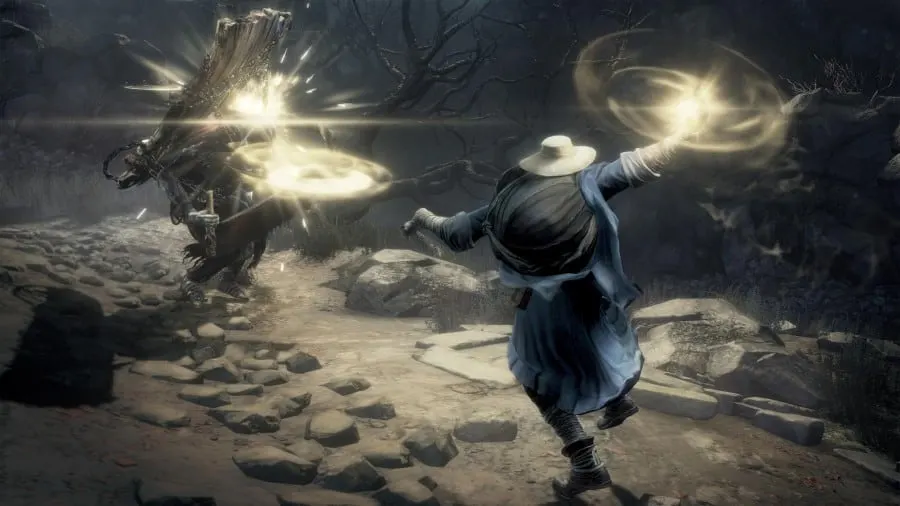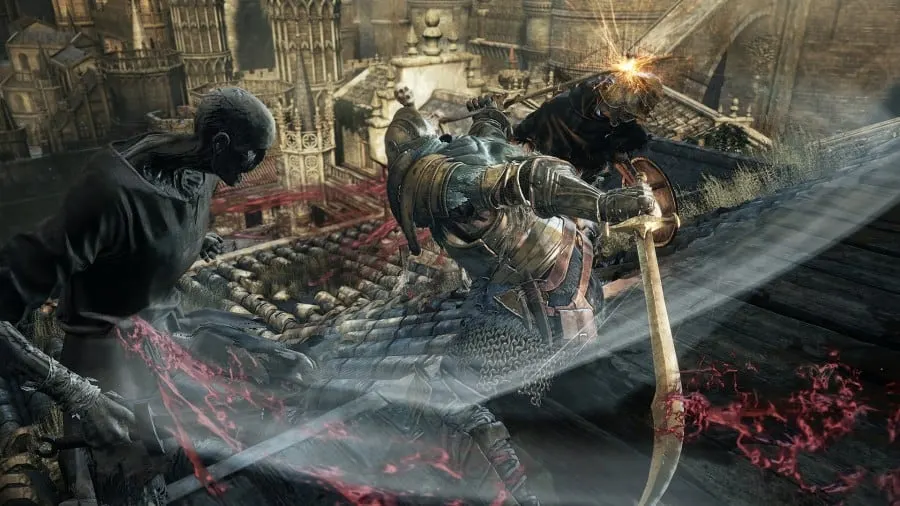The art of spellcasting in Dark Souls 3 functions differently than in previous series iterations. If you employed pyromancy, miracles, or sorcery with any of your characters or builds in the previous games, you will need to make some slight adjustments to how you approach spellcasting depending on how much you use it.
If this is your first game in the series, and you want to familiarize yourself with magic, you will need some tips to configure your character build to your liking.
Using Magic

In previous Dark Souls games, each spell had a set amount of times you could use it before you had to rest at a bonfire to replenish it. The number of times you could use it generally coincided with the overall strength of the spell you were casting.
In other words, you could get multiple uses out of weaker spells before their usage was depleted, while more powerful spells had more meager uses and required some thought as to when and where was the best time to use them.
In Dark Souls 3, in addition to your health and stamina bar (red and green, respectively), a blue mana bar has been added that governs how many times you can use a spell.
With some variation, no matter what class you start with, your mana bar will typically only allow for a few spellcasters before you need to refill it (which can be done automatically by resting at a bonfire).
You must level the “Attunement” stat to increase your maximum mana. In addition to increasing your max mana, Attunement also serves another critical function in magic usage.
You can only have a certain number of spells equipped on your character at a given time. Again, contingent on the class you start with, this will be a very low number at the beginning of the game.
Therefore, if you want to try out different spells, you must constantly find a bonfire and configure your magic preferences for each venture. This is not only cumbersome but severely handicaps your potential as a spellcaster.
When you upgrade your Attunement stat to certain level milestones, you will gain an additional “Attunement slot,” which means an additional inventory space to hold a spell of your choice while on the field.
Therefore, to maximize your abilities with magic and give yourself a variety of spells to choose from and use more than once, you will want to be generous to your Attunement stat.
Ashen Estus Flasks
Integrating the mana bar into Dark Souls 3 can be a blessing or a curse depending on how you optimize your equipment and build. Because your mana bar starts so low and depletes so fast, your usage of even the weakest of spells is very limited compared to the system in the first two Dark Souls games.
Unsurprisingly, the amount of mana used for each cast depends on the spell’s strength, so a weaker spell like Lightning Spear will be kinder to your mana bar. At the same time, a more powerful one like Sunlight Spear will gluttonously swallow up your mana.
To accommodate the new mana bar, the Ashen Estus Flask was introduced as well. While the standard Estus Flask restores your character’s health, the Ashen Estus Flask will replenish your lost mana.
Unfortunately, the number of times you can take a swig of the Estus Flask and Ashen Estus Flask is based on a singular variable, meaning you must share the number of times you can use them between the two.
For example, if you have upgraded your usage of these special flasks to a maximum of 10 using Estus Shards, you have to decide how many of these usages you will allocate to standard Estus Flasks and Ashen Estus Flasks.
An idealist might decide that 5 points in the standard Estus Flask and the other 5 in the Ashen Estus Flask are a good approach. Still, depending on your build and what you’re trying to accomplish, you must carefully decide how to allocate your flask uses.
Thankfully, this stat can be changed and reconfigured anytime by visiting the blacksmith in Firelink Shrine.
Since each player and their build in Dark Souls is unique, we can’t recommend an exact number of points allocated to each stat for every scenario. Still, we can offer some advice on the variables you should consider.
If you are a mage or your build is based heavily on spellcasting, you will want to be very liberal with the number of points you allocate to your Ashen Estus Flask.
While it may seem risky to leave yourself with a comparatively low amount of standard Estus Flasks for restoring your health, a talented player can learn how to employ the long range of many offensive spells to keep themselves out of risk of sustaining damage from the more brutish, hard-hitting melee foes.
If your use of magic is more or less just a small supplement to a predominantly melee character, you may want to keep your standard Estus Flask count high and your Ashen Estus Flasks low.
Types of Magic

Now that you understand how to employ magic to some degree of functionality, it’s time to look at the available categories. In simple terms, there are three different types of magic, not including their “dark” variants: Miracles, Sorcery, and Pyromancy.
The former two scales with the Faith and Intelligence stat, respectively, while the latter scales with both, meaning the overall damage they do is contingent on how these stats are.
Additionally, to be able to use the more powerful spells in each category, you will need to level up your stats in each category to meet the requirement dictated by the individual spell.
Miracles include various spells, including, but not limited to, lightning-based projectiles and weapon buffs and individual and group healing casts (useful if you’re playing co-op). You must have a chime or talisman in your main or off-hand to use miracles.
As stated previously, miracles scale with the Faith stat and require a high level in this category to use the most impressive ones.
Sorceries are more geared toward players who want a mage-type character. Sorceries include different projectile-based attacks, weapon buffs, and some interesting “utility” spells that can be mixed into sound effects.
To use sorceries, instead of a chime or talisman as you would need for miracles, you will instead need to equip a staff or any of the other rarer weapons that allow sorceries, such as the Immolation Talisman.
Once again, sorceries scale with Intelligence and will generally reach their apex in their damage and spells you have access to at around level 50 in this stat.
Pyromancies, as the name suggests, are predominantly flame-based spells occupying a hybrid position between Miracles and Sorceries. They don’t have a single individual stat that they scale with but instead scale, to some degree, with Faith and Intelligence, as well as the casting weapon you are using.
While investing in both Faith and Intelligence can seem a bit inelegant (you generally want to pick one or the other, never both unless you are trying some crazy builds), the good news is you don’t need as high of a level in either of these stats to gain full access to the roster of available pyromancies.
The single weapon you use to cast pyromancy, the Pyromancy Flame, can be upgraded like any other weapon with titanite, increasing the amount of damage you can dish out overall.

